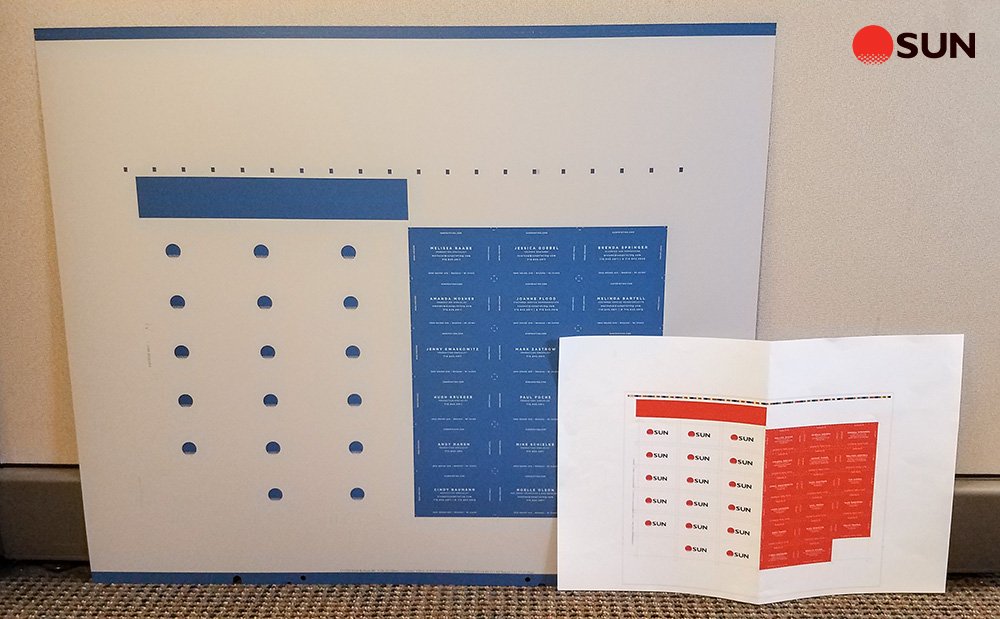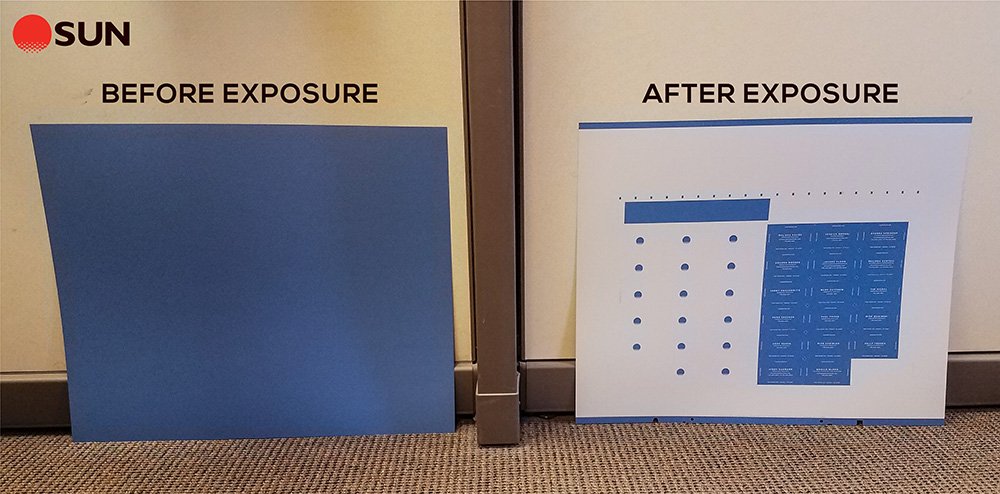Offset Printing Plates: The Inside Scoop!
It gets them every time; We’re not sure if it’s the loud beeping from the equipment calling attention that way, or the big sheet of metal our pre-press technician is tossing around, but whenever we have visitors here at SUN, they always seem fascinated by their first time gazing at an offset printing plate. When we show people a fully processed plate, it often leads to more questions than we can answer, so here it is, everything you need to know about printing plates!
What are the Plates Used For?
Metal plates are used in a very common process of commercial printing called Lithography - also known as Offset Printing. The process starts when liquid ink is applied to a metal plate that has an image exposed on it (Figure 1). The plate then transfers the inked image onto a rubber cylinder. Finally, the cylinder prints the image on a piece of paper or some other form of substrate.
What are they made of?
Offset printing plates are often made of metals like aluminum and zinc. They are then coated with a layer of photosensitive material – depicted by the blue plate below (Figure 2).
How big are they?
Plate size varies depending on the size of the printing press and how big a sheet of paper that press can handle. Here at SUN, we have a variety of plate sizes we use depending on job quantity, complexity, and size of the press it’ll run on.
Figure 1
Figure 2
How do you prepare a plate for printing?
The process starts by inserting the plate into an exposure unit. The machine uses laser technology to apply light to the image areas, which hardens the coating on those areas. Traditionally, after exposure, the plate is then sent through a separate processing machine where areas of the plate not exposed by the laser are simply washed off. In recent years, newer plate technologies have emerged using a “process-less” system – meaning the exposed plate can skip the processing machine and go directly on the press, which washes off the non-hardened image area using its own fountain solution.
What does the surface of the plate feel like?
Unlike the surface of a stamp, the surface of the printing plate is completely flat, and here’s why: You know how water and oil will separate inside of a cup? Well, the offset printing press uses that same logic. An exposed plate has image areas where ink, which contains grease (oil), is applied (blue area in Figure 2), and non-image areas where water is applied (gray area in Figure 2). On the plate, the two don’t mix, so when the ink is transferred to the rubber cylinder and eventually the paper, it leaves a perfectly crisp result!
how many plates do you need for an Offset job?
This answer depends on multiple factors including product type, design intricacy, and what the customer wants to achieve for color. Most printing processes produce imagery using Cyan, Magenta, Yellow, and Black (CMYK) ink colors. Offset presses create overlapping dots of these colors to visually simulate all the colors in the spectrum. This means every shade of color on a printed product is a mixture of these 4 basic colors, with the exception of spot colors (keep reading). Multiple colors cannot be exposed on a single plate, so each ink requires its own plate – called a separation. That being said, we typically have 4 plates (CMYK) per 1 side of paper. If a project is double-sided, we often need another set of plates made for the backside. In special instances, a customer may request that we use a pre-mixed ink color called a spot color. If that’s the case, then the spot color would be exposed as its own separate plate. With so many variables at play, you’re probably not surprised to learn that here at SUN, we’ve had anywhere from 1 - 64+ plates exposed for a single job!
There you have it folks! Answers to all the common questions we get about printing plates and then some! We hope this blog article has given you a deeper understanding and appreciation for the crucial role plates play in the offset printing process.



